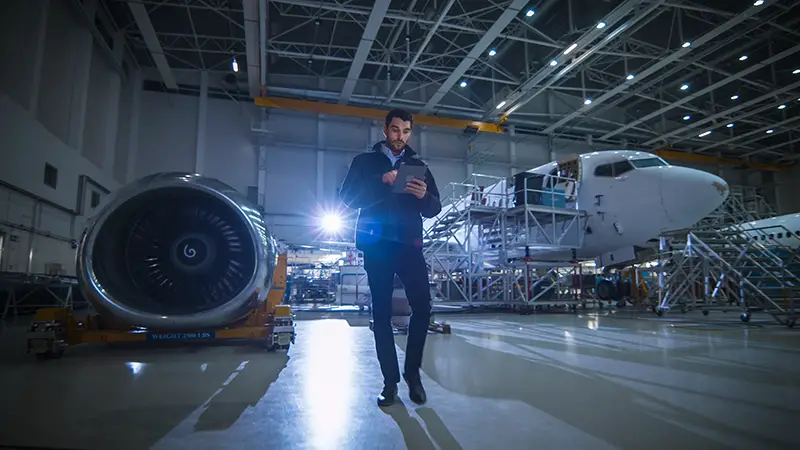Click here to get this post in PDF
Pilots get the spotlight in the aviation industry, but they depend on skilled workers on the ground. Many jobs with the potential for career growth are available to people certified as aviation maintenance technicians (AMT). They perform numerous mechanical functions important for airplane safety. Changing aircraft landing lights is just one example of maintenance duties for people in this trade. These are the lights in the noses and wings of airplanes that illuminate the runway to aid pilots during takeoffs and landings. An AMT in a supervisory role could buy replacement aircraft landing lights from Specialty Bulb.
How To Become An AMT
Adults age 18 or older may attend schools that issue AMT certificates with approval from the Federal Aviation Administration (FAA). Aspiring mechanics must pass written, oral, and practical tests to demonstrate competency in Title 14 of the Code of Federal Regulations (14 CFR) part 65, subpart D, Mechanics.
Alternatives to FAA-approved schools include completing Joint Service Aviation Maintenance Technician Certification Council (JSAMTCC) courses run by the military or obtaining practical knowledge of aviation systems in other real-world settings. Someone who worked under the supervision of an AMT can earn the certification after finishing 18 months of on-the-job experience.
Common AMT Career Paths
An aviation mechanic will start outperforming routine maintenance, like checking aircraft lights and changing aircraft lamps. A good portion of the job entails diagnostics and problem-solving. The reason why a system is failing is not always easy to pin down, which requires collaboration with colleagues who may have more experience.
The aircraft mechanic job outlook is good. As a person develops skills and specialties, promotion to maintenance control department positions becomes possible. People in this department monitor systems and follow guidelines for replacing parts that become worn out. They are tasked with preventing problems and keeping airplanes in the air.
Due to the critical need for operational fitness within an aviation fleet, AMTs may also ascend to quality assurance and auditing positions. They will oversee maintenance activities to confirm compliance with mechanical standards and simply supply a second set of eyes to keep errors to an absolute minimum.
As people progress with their careers, they may qualify for supervisory and managerial roles. At this level, these professionals attend to many tasks, such as ensuring that new AMTs have proper training, scheduling, and coordination with other departments at an airport. Additionally, they may manage parts ordering and keep critical parts in stock. For example, aircraft light bulbs should be on hand to ensure that aviation lighting is always operational.
Entities That Employ AMTs
Commercial air carriers obviously hire AMTs. The airlines that transport the public represent the largest segment of companies in this category. They operate scheduled flights. A few air carriers specialize in charter flights instead of publicly scheduled air service. At times, AMTs might work within tight turnaround times to keep airplanes flying on time. Other job duties related to routine maintenance would be scheduled ahead of time.
Corporations and other businesses that own or lease their own airplanes or helicopters also employ AMTs. These employers typically have space alongside the commercial air carriers at airports and smaller airfields. Whether an AMT works for an air carrier or a private fleet, the job could involve traveling with the airplanes domestically or internationally.
AMTs uninterested in a position that might involve travel would appreciate jobs at a fix-based operator. These companies are located in proximity to an airport. They provide various services like fueling, aircraft maintenance, or flight instruction. Overall, an airplane mechanic has diverse job opportunities and a chance for advancement.
You may also like:
Elevating Excellence: Navigating the Skies with Aviation Consulting in the UK

